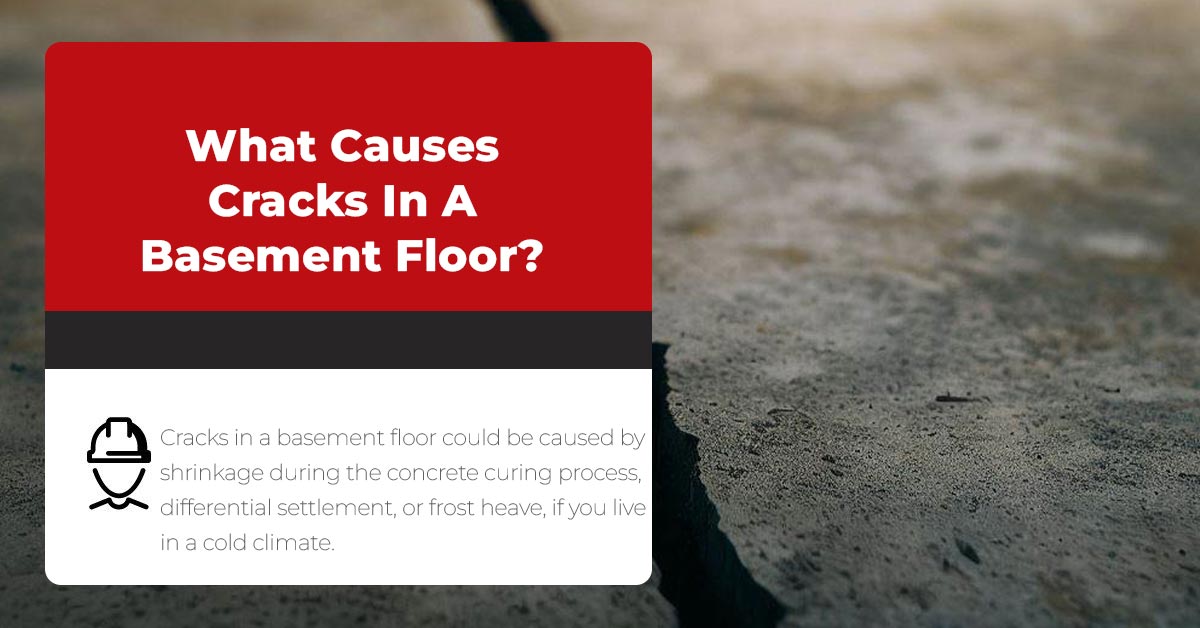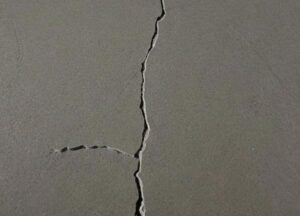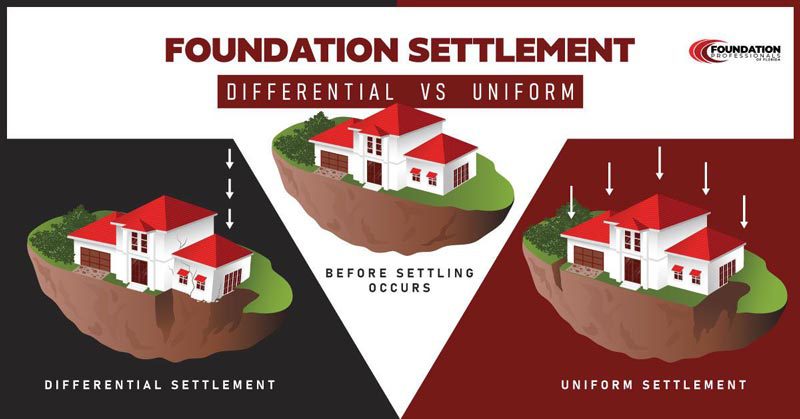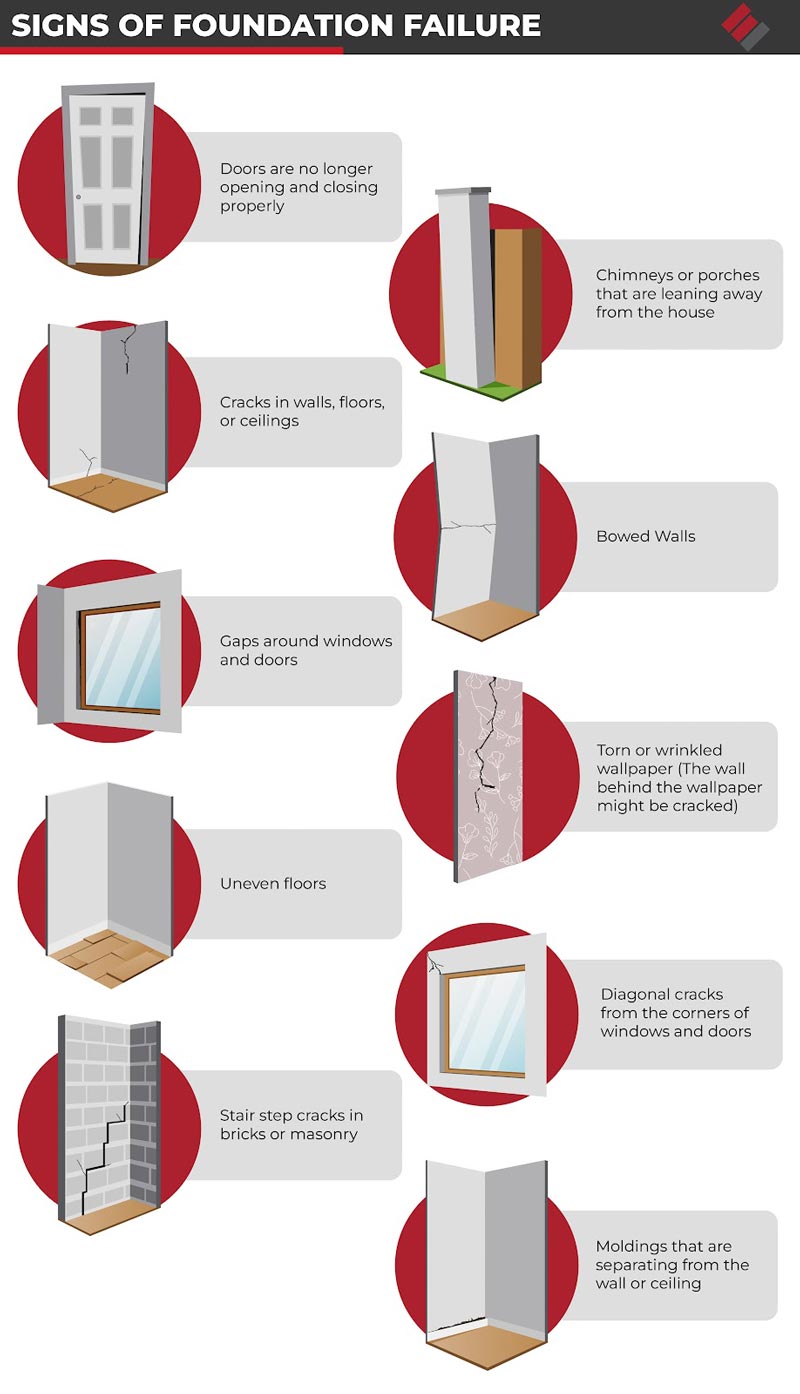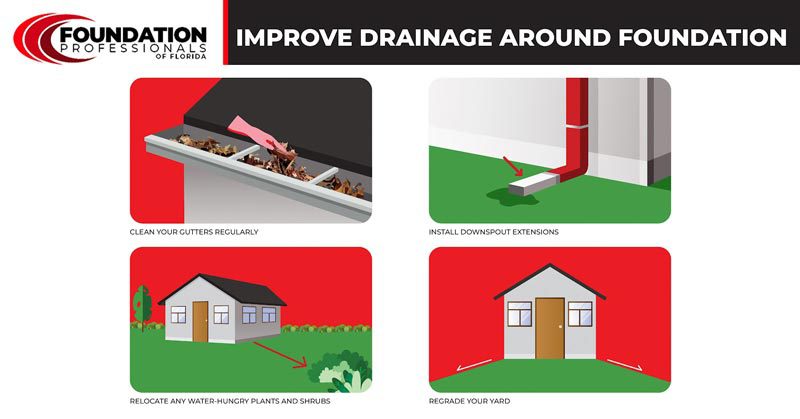Are you searching for information about what causes cracks in a basement floor? If so, this article has what you need. We’ll explore what causes cracks in a basement floor and how these problems might be handled effectively. Read on to learn more about why your basement floor may have developed damage in the first place.
What Causes Cracks In A Basement Floor?
Cracks in a basement floor can be caused by various reasons, including the following:
- Concrete shrinkage during the curing process – Hairline shrinkage cracks during the concrete curing process are very common and usually nothing to worry about as they don’t affect your home’s structural integrity.
- Differential settlement – If the soil supporting the basement floor shifts, settles, or expands due to changes in moisture content, it could lead to a phenomenon called differential settlement. This is when the foundation settles into the ground unevenly. If that happens, it can cause foundation problems, including cracks in the basement floor. Differential settlement is caused by various factors, including expansive soil, erosion-prone soil, excavation too close to the foundation, and soil that wasn’t adequately tamped down before construction began.
- Frost heave – Frost heave is a natural phenomenon that occurs when soil freezes and thaws. As the water in the soil freezes, it creates pressure that pushes the soil upward. This upward force can be so strong that it can crack concrete.
How To Fix Cracks In A Basement Floor
When fixing cracks in a basement floor, the first step is to identify the type of crack you’re dealing with, as this will determine the appropriate repair solution.
Fixing cracks in a basement floor caused by shrinkage
Although cracks in a basement floor caused by shrinkage during the concrete curing process aren’t structurally significant, they can allow water to seep through the floor and into your basement. Therefore, they should be sealed. This is usually done using epoxy or polyurethane foam.
Fixing cracks in a basement floor caused by differential settlement or frost heave
Cracks in a basement floor caused by differential settlement can be repaired via underpinning. This often involves using push or helical piers to extend the foundation down to load-bearing soil. Once the piers are in place, a synchronized hydraulic lifting system raises the foundation to maximum practical level. Underpinning restores the foundation’s structural integrity and does not require extensive excavation or disruption of your daily routine. Most underpinning jobs can be completed relatively quickly once all the necessary materials are on-site.
Whatever the cause of the crack in the basement floor, it’s essential to address it sooner rather than later to prevent further damage. For more information, see How Serious Is A Foundation Crack?
What About DIY Crack Repair For Cracks In A Basement Floor?
Although crack repair for a basement floor can sometimes be done by a homeowner, it is not necessarily recommended. DIY crack repair usually involves using epoxy resins, which are often ill-suited to the job. The basement environment typically requires specialized products such as polyurethane foams and hydrophobic compounds that can expand and contract with temperature changes.
Additionally, if not applied properly, epoxies may fail to bind to the floor structure. This could allow water to penetrate the cracks and cause further damage to the foundation. This is why we generally advise against DIY crack repair for basement floors. A reputable contractor will have access to materials suited for long-term durability and proper installation techniques that will ensure the basement floor crack is repaired correctly.
For best results, homeowners should seek out experienced professionals who can assess and diagnose their problem before attempting any repairs themselves. An inspector will be able to identify any drainage issues that may have contributed to differential settlement and recommend how best to address them. Additionally, they can advise which waterproofing materials would work best with your basement floor to ensure long-term durability and stability over time.
Common Signs Your Home May Have A Foundation Problem
If you’re a homeowner, it’s important to be aware of the signs that your home may have a foundation problem. While some signs are obvious, such as cracks in the walls or floors, others may be more subtle and easy to miss. Here are some things to watch out for:
- Cracks in walls, floors, or ceilings
- Doors and windows that stick or won’t close properly
- Uneven floors
- Stair step cracks in brick or masonry
- Floors and ceilings that are separating from the wall
- Torn or wrinkled wallpaper (could be a sign the wall behind the wallpaper is cracked)
- Moldings that have separated from the wall or ceiling
- Chimneys or porches that are pulling away from the house
- Diagonal cracks from the corners of windows and doors
- Bowed walls
If you notice any of these signs, it’s essential to act quickly before the problem worsens and becomes much more expensive to fix. Don’t hesitate to call a foundation repair professional to assess the situation and recommend a course of action. Your home is likely your most significant investment, so don’t let foundation problems compromise its value and safety.
How To Improve Drainage Issues Around Your Home’s Foundation
Since most foundation problems are caused by poor drainage, you can go a long way toward preventing trouble by improving drainage around the foundation. There are several steps you can take to improve drainage, including the following:
- Clean your gutters regularly because dead leaves and other debris can cause water to spill over the side of the house and soak the ground around the foundation.
- Install downspout extensions so that runoff is carried at least four feet away from the foundation before being released.
- If necessary, regrade your yard, so it slopes away from the foundation. This will prevent groundwater from draining toward the foundation.
- Relocate any water-hungry plants and shrubs that are planted next to the house.
- Install a drain tile system to control groundwater around the foundation. When it comes to foundation waterproofing, nothing beats a drain tile system.
It’s essential to address any drainage issues as soon as possible to avoid costly repairs down the road. By taking these steps, you can ensure that your home is protected from water damage and your foundation remains secure for years to come.
Cracks in a basement floor may appear at first to be nothing more than an eyesore, but if left unchecked can lead to much bigger problems. So, if you see a crack in your basement floor, contact Foundation Professionals of Florida today.

